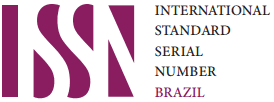Inferência informal e inferência “informal”<br>Informal and “Informal” Inference
DOI :
https://doi.org/10.23925/1983-3156.2019v21i1p433-460Mots-clés :
Inferencia estadística, simulación y remuestreo, comprensión conceptual, pensamiento estadístico, elementarizaciónRésumé
“Inferencia Informal” es un enfoque de la inferencia estadística, que se basa en métodos de remuestreo y se vincula a bootstrap como sustituto de los intervalos de confianza y a las pruebas de aleatorización como alternativa a los contrastes estadísticos. La inferencia informal, por otro lado, es una conceptualización de la inferencia estadística mediante la simplificación de su complejidad mediante contextos que hacen que la interpretación de los conceptos desarrollados sea significativa, o mediante el establecimiento de analogías y metaconocimientos que proporcionen comprensión. Primero, ilustramos la prueba de significación mediante una prueba de rangos elemental. Segundo, construimos ideas informales sobre la inferencia, por analogía con la situación médica. En tercer lugar, destacamos el potencial de las aproximaciones informales a la inferencia estadística mediante ejemplos. En cuarto lugar, describimos el enfoque de “Inferencia Informal”. Finalmente, sacamos algunas conclusiones sobre el potencial didáctico y los inconvenientes de la “Inferencia Informal”. Nuestras consideraciones están significadas por el objetivo de facilitar la comprensión conceptual.
“A inferência informal” é uma aproximação da inferência estatística baseada na reamostragem de métodos e alça de conexões como substituição de intervalos de confiança e testes de re-randomisation como alternativa para testes estatísticos. A inferência informal, de outro lado, é uma conceptualização da inferência estatística por elementarising a complexidade cheia pelo contexto que faz a interpretação dos conceitos desenvolvidos significativa, ou estabelecendo analogias e conhecimento da Meta que fornecem o discernimento. Primeiramente, ilustramos o teste de significação por um teste de fila elementar. Em segundo lugar, construímos ideias informais sobre a inferência por uma analogia com a situação médica. Em terceiro lugar, destacamos o potencial de caminhos informais à inferência estatística por exemplos. Em quarto lugar, descrevemos a “Inferência Informal” aproximação. Finalmente, tiramos algumas conclusões sobre o potencial didático e os descontos “da Inferência Informal”. As nossas considerações significam-se pela meta de facilitar a compreensão conceptual.
“Informal Inference” is an approach to statistical inference based on resampling methods and links bootstrap as replacement for confidence intervals and re-randomisation tests as alternative to statistical tests. Informal inference, on the other hand, is a conceptualisation of statistical inference by elementarising the full complexity by context that makes the interpretation of the developed concepts meaningful, or by establishing analogies and meta-knowledge that provide insight. Firstly, we illustrate the significance test by an elementary rank test. Secondly, we build informal ideas about inference by an analogy to the medical situation. Thirdly, we highlight the potential of informal ways to statistical inference by examples. Fourthly, we describe the “Informal Inference” approach. Finally, we draw some conclusions about the didactical potential and the drawbacks of “Informal Inference”. Our considerations are signified by the goal of facilitating conceptual understanding.
Références
BARNETT, V. (1982). Comparative statistical inference (2nd ed.). New York: Wiley.
BATANERO, C. & BOROVCNIK, M. (2016). Statistics and probability in high school. Rotterdam: Sense Publishers.
BEN-ZVI, D., MAKAR, K., & GARFIELD, J. (2018). International handbook of research in statistics education. Cham, Switzerland: Springer International.
BIEHLER, R. (2014). On the delicate relation between informal statistical inference and formal statistical inference. In K. Makar (Ed.), Proceedings of the Ninth International Conference on Teaching Statistics. The Hague: ISI.
BOROVCNIK, M. (1996). Trends und Perspektiven in der Stochastik-Didaktik [Trends and perspectives in the didactics of stochastics]. In: G. Kadunz, H. Kautschitsch, G. Ossimitz, & E. Schneider (Eds.): Trends und Perspektiven (pp. 39-60). Wien: HPT.
BOROVCNIK, M. (2006a). Daten – Zufall – Resampling [Data–randomness–resampling]. In J. Meyer (Ed.), Anregungen zum Stochastikunterricht Band 3. Tagungsband 2004/5 des Arbeitskreises “Stochastik in der Schule” (p. 143-158). Berlin: Franzbecker.
BOROVCNIK, M. (2006b). On outliers, statistical risks, and a resampling approach towards statistical inference. Paper presented at CERME V). Larnaka.
BOROVCNIK, M. (2017). Informal inference – Some thoughts to reconsider. In Proceedings of the 61st World Statistics Congress. The Hague: ISI.
BOROVCNIK, M. (n.d.). Spreadsheets in Statistics Education. Online: wwwg.uni-klu.ac.at/stochastik.schule/Boro/index_inhalt.
BROUSSEAU, G. (1984). Le rôle central du contrat didactique dans l’analyse et la construction des situations. Non-published paper.
CARRANZA, P. & KUZNIAK, A. (2008). Duality of probability and statistics teaching in French education. In C. Batanero, G. Burrill, C. Reading, & A. Rossman (Eds.), Joint ICMI/IASE Study: Teaching Statistics in School Mathematics. Challenges for Teaching and Teacher Education. Monterrey: ICMI and IASE.
COBB, G.W. (2007). The introductory statistics course: A Ptolemaic curriculum? Technology Innovations in Statistics Education 1(1).
DELMAS, R. (2017). A 21st century approach towards statistical inference – Evaluating the effects of teaching randomization methods on students’ conceptual understanding. In Proceedings of the 61st World Statistics Congress. The Hague: ISI.
EFRON, B., & TIBSHIRANI, R. J. (1993). An introduction to the bootstrap. New York – London: Chapman & Hall.
ENGEL, J. (2010). On teaching bootstrap confidence intervals. In C. Reading (Ed.), Data and context in statistics education: Towards an evidence-based society. Voorburg: International Statistical Institute.
GIGERENZER, G. (2002). Calculated risks: How to know when numbers deceive you. New York: Simon & Schuster.
HOWELL, D. (n.d.). Resampling statistics: Randomization & Bootstrap. Statistical page of D. Howell. Online: www.uvm.edu/~dhowell/StatPages/Resampling/Resampling.html.
HUBBARD, R. & BAYARRI, M. J. (2003). Confusion over measures of evidence (p) versus errors () in classical statistical testing. The American Statistician 57(3), 171-182.
LUNNEBORG, C. E. (2000). Data analysis by resampling: concepts and applications. Pacific Grove, CA: Duxbury Press.
NEYMAN J. & PEARSON E. (1933). On the problem of most efficient tests of statistical hypotheses. Philosophical Transactions of the Royal Society A, 231, 289-337.
NOETHER, G. (1967). Elements of noparametric statistics. New York: Wiley.
ROSSMAN, A. J. (2008). Reasoning about informal statistical inference: one statistician’s view. Statistics Education Research Journal 7(2), 5-19.
STOHL LEE, H., ANGOTTI, R. L., & TARR, J. E. (2010). Making comparisons between observed data and expected outcomes: students’ informal hypothesis testing with probability simulation tools. Statistics Education Research Journal 9(1), 68-96.
VANCSÓ, Ö. (2009). Parallel discussion of classical and Bayesian ways as an introduction to statistical inference. International Electronic Journal of Mathematics Education 4(3), 291-322.
Téléchargements
Publiée
Comment citer
Numéro
Rubrique
Licence
Autores que publicam nesta revista concordam com os seguintes termos:- Autores mantém os direitos autorais e concedem à revista o direito de primeira publicação, com o trabalho simultaneamente licenciado sob a Licença Creative Commons Attribution que permite o compartilhamento do trabalho com reconhecimento da autoria e publicação inicial nesta revista.
- Autores têm autorização para assumir contratos adicionais separadamente, para distribuição não-exclusiva da versão do trabalho publicada nesta revista (ex.: publicar em repositório institucional ou como capítulo de livro), com reconhecimento de autoria e publicação inicial nesta revista.
- Autores têm permissão e são estimulados a publicar e distribuir seu trabalho online (ex.: em repositórios institucionais ou na sua página pessoal) a qualquer ponto antes ou durante o processo editorial, já que isso pode gerar alterações produtivas, bem como aumentar o impacto e a citação do trabalho publicado (Veja O Efeito do Acesso Livre).













